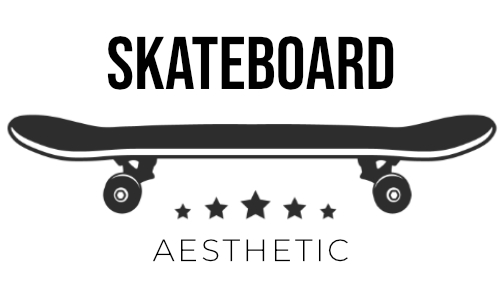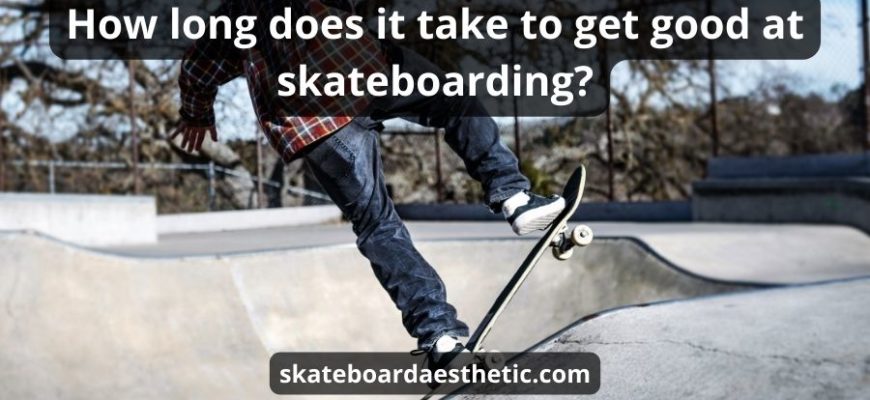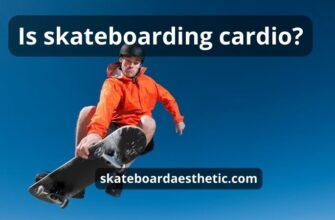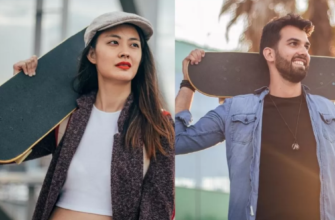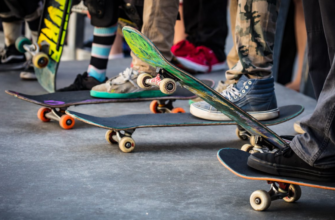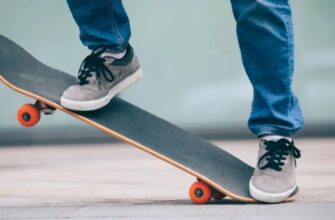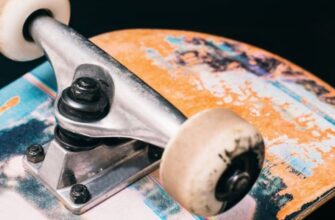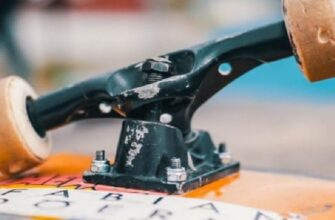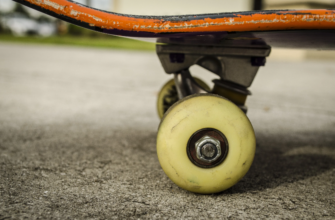Skateboarding is an exciting and vibrant sport that appeals to people all over the world.
Prospective skateboarders frequently ask themselves: how long does it take to get good at skateboarding? Even though every person’s journey to competency is different, knowing what influences skill development can help clarify this fascinating subject.
The progression of skating is shaped by several factors, ranging from inherent talent and basic tricks and advanced tricks’ complexity to practice consistency.
In this guide, we’ll talk about the variables that affect how long does it take to get good at skateboarding, stressing that the process is just as rewarding as the final result.
Now let’s get started and explore the intriguing variables that surround the quest for skateboarding greatness. I hope this guide will be interesting and informative for you to read.
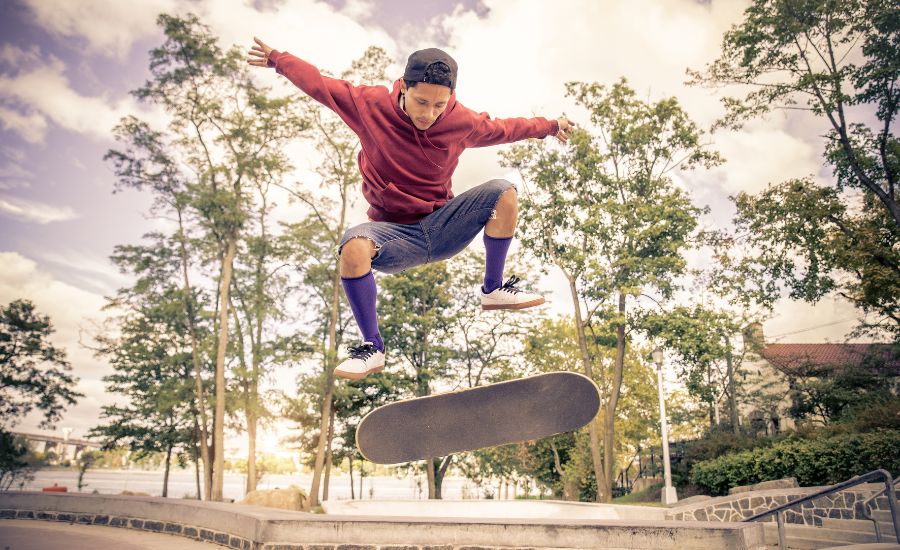
- How long does it take to get better at skateboarding?
- Level of skill and experience
- Practice length and frequency
- Individual dedication and effort
- Particular goals and skills
- Timeline of Skateboarding Progression
- How do you place your foot while skateboarding?
- Choose your stance
- Front foot positioning
- Back foot positioning
- Changing where your feet land for tricks
- How many hours does it take to learn to skateboard?
- Is it too late to learn to skateboard at 20?
- Physical Capability
- Mental Maturity
- Motivation and Dedication
- Community and Resources
- How long does it take to learn how do you Ollie?
- Basic ollie
- Muscle memory and consistency
- Technique refinement
- Conclusion
How long does it take to get better at skateboarding?
The length of time it takes to get better and become a skateboarding expert on a street spot varies a lot and is dependent on several factors, such as personal commitment, innate talent, whether you are doing the practice frequently or not, and the particular skills and technical tricks one wants to learn.
Generally speaking, learning to skateboard well takes anywhere from 12 months to 3 years.
You will be able to pick up a few fundamental skills in a year.
You can learn complex techniques between the ages of one and three.
Each person has a different developmental timeline.
Skateboarding takes a lot of practice, persistence, and a drive to overcome obstacles to become a proficient sport.
Here are some things to think about.
Level of skill and experience
When learning the fundamentals of balancing at the flat bar, foot position, pushing, turning, and stopping, beginners usually undergo a learning curve.
It takes time and practice to move from fundamental abilities to more advanced tricks and routines.
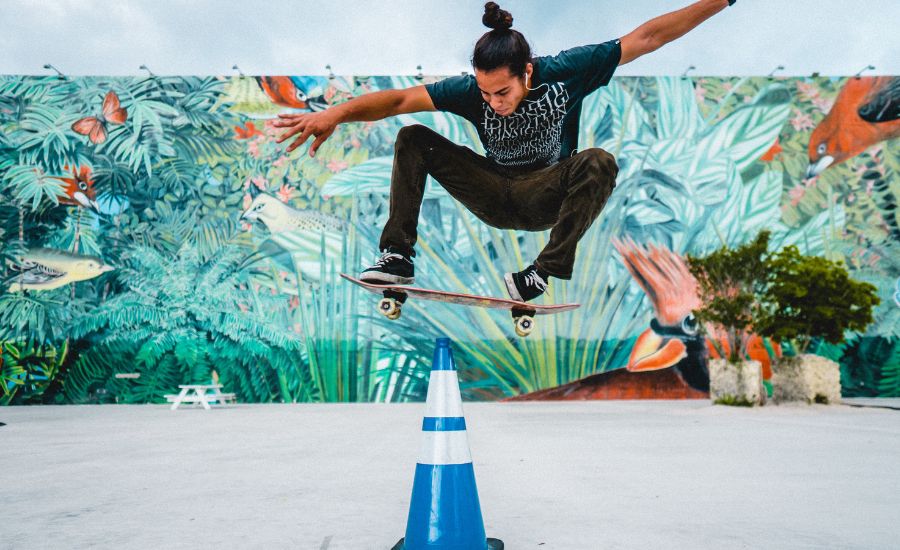
Practice length and frequency
To learn advanced tricks of skateboarding, consistent practice is necessary for progress.
You will probably advance more quickly if you skate more often and steadily.
Even for brief sessions, skateboarding regularly helps you improve your control, coordination, and muscle memory.
Individual dedication and effort
An individual’s growth in skating is greatly influenced by the amount of dedication and work they put forth.
Practice sessions involving greater time, effort, and concentration are likely to yield faster improvements.
Particular goals and skills
The precise objectives and skills you wish to develop might also have an impact on how long it takes to get better at riding skateboards.
If you compare learning advanced techniques or maneuvers that demand greater technical competence to mastering basic skills, the former may take less time.
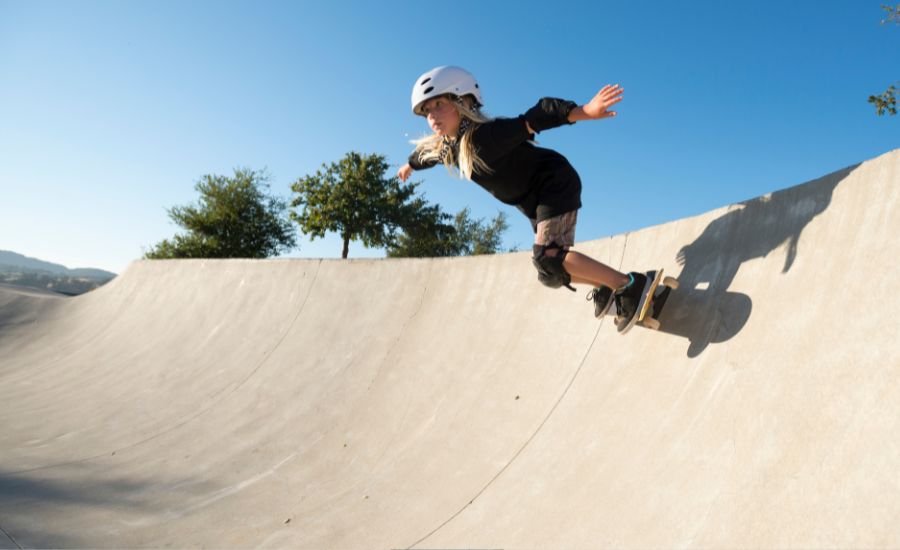
Timeline of Skateboarding Progression
This timeline assumes to help you get a sense of what to expect; some people will learn skateboarding more quickly than others.
You will advance more quickly the more you skate with peers and practice at your own pace.
Months 0–1. You should dedicate the first month to becoming proficient skateboarders.
It is a fantastic place to start to push, turn, and stop on flat ground.
Months 2-4. Now that you are proficient in riding and turning, it’s time to advance to more fundamental maneuvers, such as manuals, kick turns, ollies, and navigating the obstacles of skate parks.
Months 5-8. Investing in the necessities now will pay you handsomely.
Slappies (grinding curbs), nice ollies, fakie big spins, shuvits, and small board slides are examples of tricks that shouldn’t cause any issues.
Months 9 through 12. You’ve got the hang of ollies and can start ollieing two or three steps at a time. Try rails and ledges now that you are comfortable using ollies.
After your very first grind, you’ll feel delighted! During this phase, you also learn how to combine basic moves like the heelflip and kickflip.
After a year or more. You’re almost ready to perfect the heelflip or kickflip.
Now that the tre flip is almost here, you can decide how much you want to study!
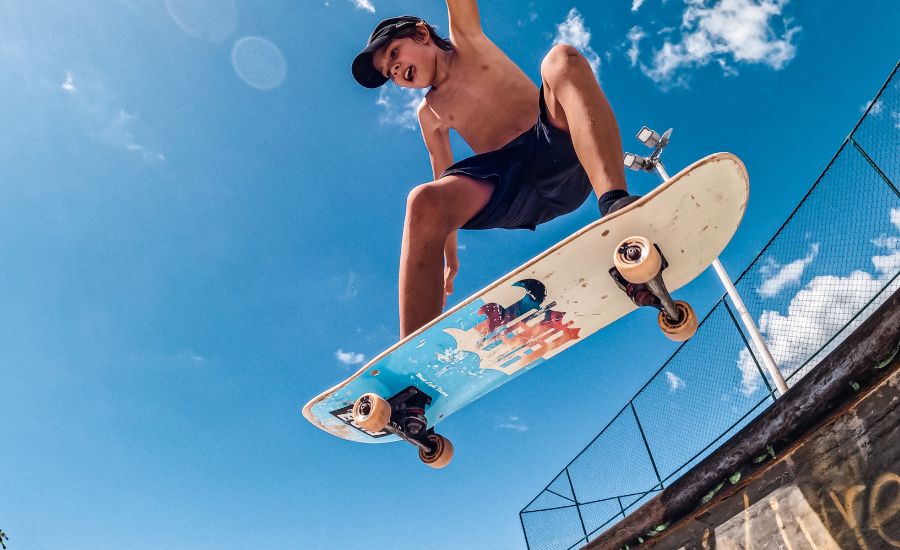
How do you place your foot while skateboarding?
Here’s a step-by-step tutorial on how to position your front and back feet on a skateboard.
Choose your stance
Choose between skating with your left foot ahead for a standard stance and your right foot forward for a better posture.
On a skateboard, one foot usually goes in the back, the dominant one.
Front foot positioning
In a standard stance, place your front foot in the center of the skateboard, slanted slightly in the direction of your nose, with the ball of your front foot — the space immediately below your toes — facing forward. For better control, you can let your toes dangle a little over the edge.
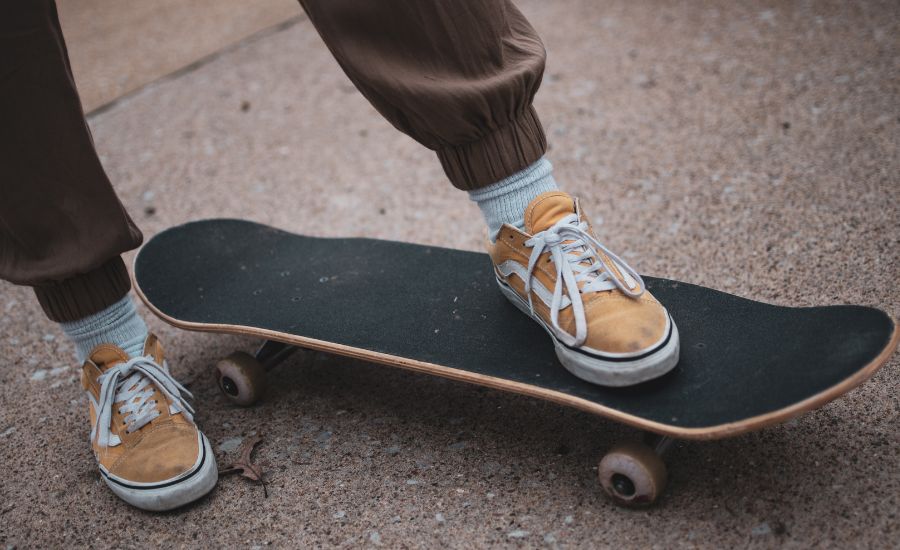
Back foot positioning
In a standard stance, plant your back foot perpendicular to the board, on top of or slightly behind the skateboard’s tail. The heel of your back foot should be in the middle, even though it may sag slightly off the edge.
For a change, use the other foot and apply the same technique as before.
Changing where your feet land for tricks
Your foot location may need to be adjusted depending on the trick you’re trying:
To produce more pop and control during the trick, move your back foot in closer proximity to the tail.
Try angling your front foot to generate the required flicking action by positioning the front foot closer to the edge.
Remember that while there are personal preferences and differences in skating, these rules offer a general framework for foot placement. It’s critical to make a comfortable foot posture, which gives you the most control and lets you do feats with efficiency. You’ll hone your special foot placement technique with practice and experience that fits your skating goals and style.
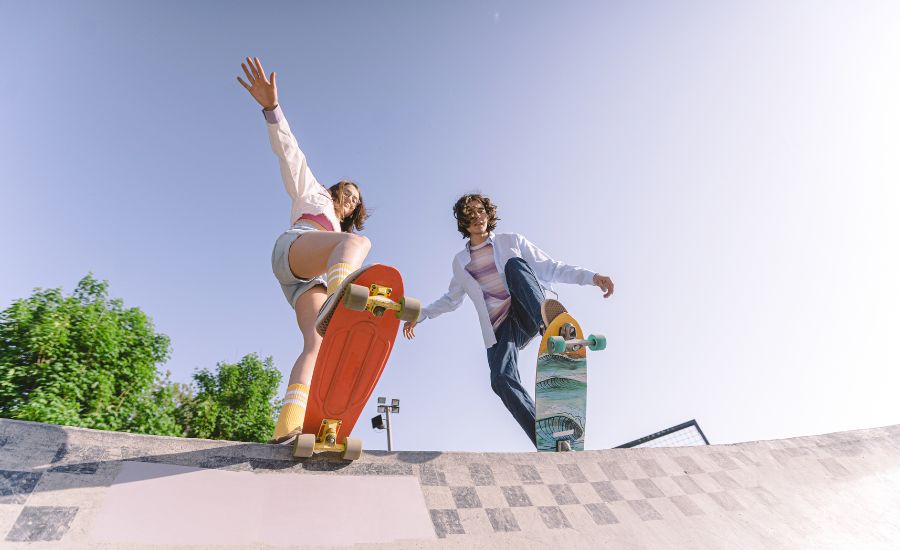
How many hours does it take to learn to skateboard?
Learning to skateboard can take a variety of hours to a few weeks, depending on a tip number of variables such as personal aptitude, board size, experience with related activities in the past, physical coordination, constancy of practice, and the particular abilities one wants to learn.
It’s critical to realize that learning to skateboard is a skill that can require commitment and time.
It usually takes a few hours of concentrated practice for novices to learn skateboarding and to get comfortable with skateboarding fundamentals including balance, pushing, turning, and stopping.
While everyone’s first learning period may differ, in general, beginners should budget at least 10 to 20 hours to get a basic level of skill.
It takes more effort and practice to graduate from the fundamentals to more complex abilities and tricks. It can take much longer to learn tricks with more difficult moves like grinds, ollies, kickflips, and ramp tricks.
Depending on the person’s commitment, innate talent, and practice frequency, mastering these advanced talents frequently takes persistent practice over weeks, months, or even years.
It’s crucial to remember that developing your skateboarding skills is a continuous process that will only continue as long as you practice and set new goals for yourself. Over time, even skilled skateboarders continue to hone their abilities and pick up new tricks.
Recall that the process of learning to skateboard is just as significant as the final goal. Enjoy the journey, persevere, and have fun as you move forward at your speed.
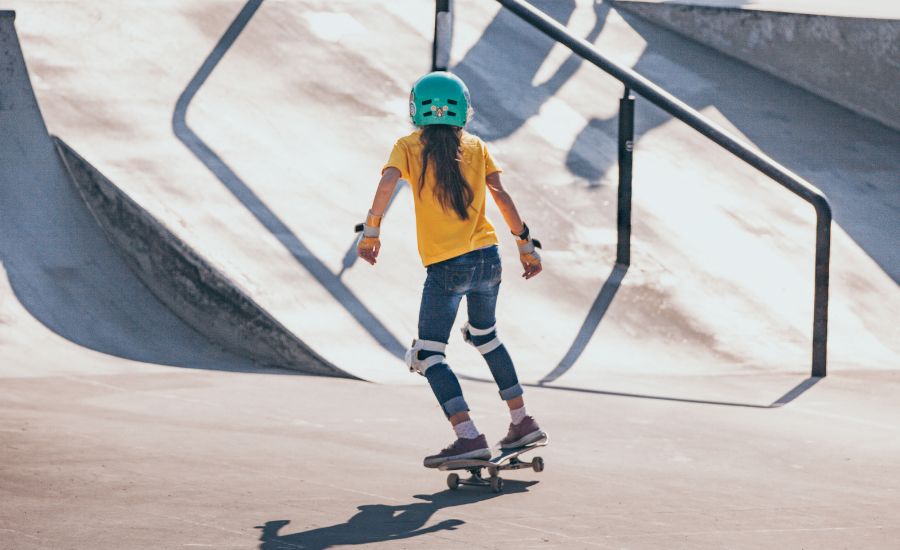
Is it too late to learn to skateboard at 20?
No, learning to skateboard or start skateboarding at the age of twenty-one is not too late! Any age can take up and learn the sport of skateboarding, even in maturity.
Even though many people begin skateboarding later in life, they still find success and immense satisfaction from it.
The following are some benefits of learning to skateboard at the age of 20:
Physical Capability
You typically have high coordination and physical capabilities at the age of 20, which can help with learning.
You can still advance in skateboarding since your body can still adapt and learn new skills.
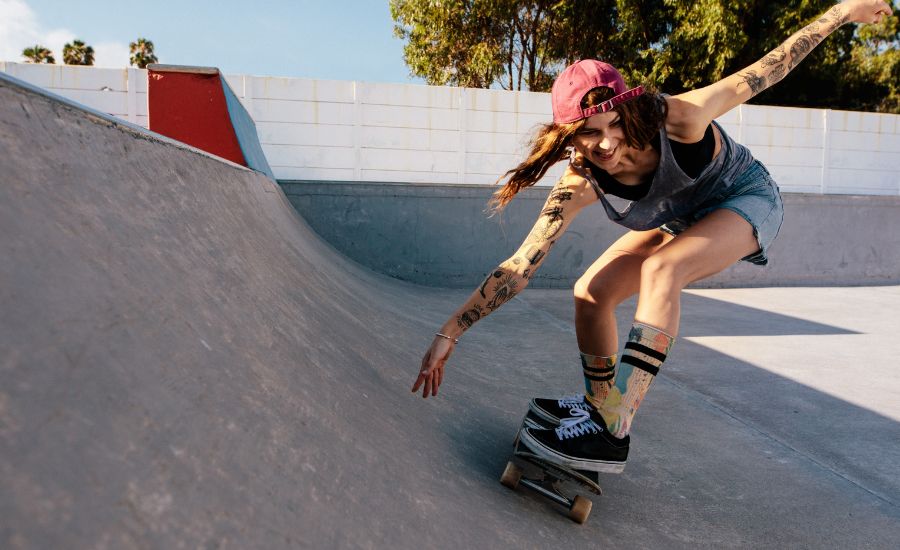
Mental Maturity
As we age, we become more focused, patient, and mature mentally.
These attributes may prove advantageous in acquiring novel abilities and surmounting the obstacles that come with skating.
Motivation and Dedication
You have the advantage of being able to set your objectives and commit time and energy to skating now that you are an adult.
Your dedication and determination can fuel regular practice, which will accelerate your success.
Community and Resources
People of all ages are welcome in the varied and inclusive skateboarding community.
You may learn from and connect with other skateboarders through a variety of options, including skate park, street spots, instructional videos, online communities, and skateboarding classes.
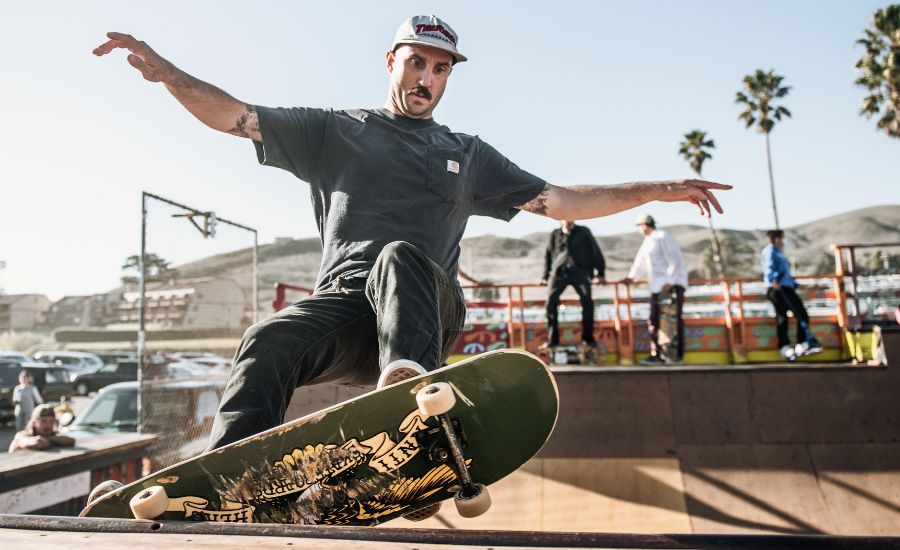
How long does it take to learn how do you Ollie?
One of the core skateboarding tricks, the ollie, can take different pace to master based on many factors like aptitude, experience, consistency, and commitment.
Considering the above, you may need some time to learn how to ollie:
Basic ollie
Mastering the maneuver that involves lifting the board into the air and leveling it out may need several hours of concentrated practice.
This first stage is becoming used to the movements, timing, and coordination needed to perform the trick.
Muscle memory and consistency
Improving your technique and building muscle memory is necessary to execute controlled and consistent decent ollies.
This frequently calls for prolonged, regular practice.
While some skateboarders can reach a high degree of consistency in weeks, others can need months.
Technique refinement
To increase height, pop, and balance in your ollies, you might need to do so as you get better at them. This process of improvement can carry on as long as you keep practicing and trying to get good at skateboarding.

Conclusion
The answer to the question of how long does it take to get good at skateboarding is, that the amount of time it takes to “get good” at skateboarding is highly variable and dependent on several variables. There are a few important things to remember even though there isn’t a set time frame.
First and foremost, practice must be committed to and continuous. You will probably get better at skating more quickly if you put in more time and effort. Frequent practice sessions and a readiness to step outside of your comfort zone may significantly speed up your learning process.
Second, the rate of advancement can be influenced by innate talent and prior experience. Certain people may naturally have an advantage due to their propensity for athleticism, balance, or coordination.
It’s crucial to remember that, regardless of ability level, anyone can advance their skateboarding abilities with consistent practice.
Thirdly, how long does it take to become proficient at skating will also depend on the particular abilities and tricks you want to acquire.
Less time, practice, and persistence may be needed to master more difficult tricks and maneuvers than basic abilities like pushing, turning, and balancing.
Finally, it’s critical to understand that skateboarding is a lifelong learning process. Even while there might not be a clear-cut threshold at which one can declare oneself to be “good” at skating, the process itself is fulfilling and fun. Skateboarding is all about having the flexibility to discover your style and abilities, as well as self-expression and creativity.
In the end, everyone’s general timeline to become proficient in skateboarding is different and subjective. Accept the process of learning, acknowledge your accomplishments along the way, and never forget that your enthusiasm, commitment, and sense of delight for the sport are what make skateboarding what it is.
